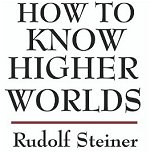|
|
|
The transcendentalist movement of the 1830s developed in New England as a reaction against the mechanical materialism and rationalism of much eighteenth century philosophy. Most of the inspiration for this movement came from Unitarian ministers, who believed that the spirit had gone out of the churches and that religion needed a new vision. The proponents claimed that the invisible spirit is the true reality, and held that each person is an extension of a universal spirit, or “over-soul,” that speaks through them in a unique and creative way. They defended the right of each individual to follow the dictates of his or her own conscience instead of established religious authority. Charles Fourier (1772-1837) saw manual labor as degrading and irksome, whether in the factory or the field. He believed that all work could be turned into play—made desirable and satisfying, physically and mentally. He designed a self-contained community, housing 1,620 members, called a phalanx after the Greek term for a unit of tightly linked fighting men. He believed men had twelve fundamental passions--the five senses, four of the soul (friendship, love, ambition and parenthood) and three related to work (love of variety, rivalry, and conspiracy). People were to be organized in squads according to “passionate attraction” thus ensuring their happiness at work. Albert Brisbane (1809-1890), a wealthy student from upstate New York, became Fourier's disciple in 1832 and returned to the United States from France hoping to start the first American Fourierist community. He began Association, the communitarian socialist movement, gaining publicity and supporters among the social reformers of the country. Brisbane stressed the compatibility of the phalanx plan with American ideals of self-government, personal freedom, equity, and social progress. The first American phalanx, the Social Reform Unity, was founded in 1842 in Pennsylvania, and two years later Brook Farm in Massachusetts, discovering the teachings of Fourier, converted to Fourierism. Before the Civil War, 28 phalanxes were founded in the United States, and the movement encompassed dozens of Fourierist clubs in cities across the country as well. Cooperative socialism proved versatile and attractive even to those unprepared to commit to the absolute communalism of phalanx living. |
 The Utopian Alternative: Fourierism in Nineteenth-Century America The utopian socialism of Charles Fourier spread throughout Europe in the mid-nineteenth century, but it was in the United States that it generated the most intense excitement. Books Civil War Womens Subjects Young Readers Military History DVDs Civil War Games |
| Civil War Exhibits Civil War Picture Album Women Soldiers in the Civil War State Battle Maps Ships and Naval Battles Civil War Cooking Documents of the War |
 How to Know Higher Worlds There slumber in every human being faculties by means of which she can acquire for herself a knowledge of higher worlds. Mystics, Gnostics, Theosophists - all speak of a world of soul and spirit which for them is just as real as the world we see with our physical eyes and touch with our physical hands. At every moment the listener may say to herself: that, of which they speak, I too can learn, if I develop within myself certain powers which today still slumber within me |